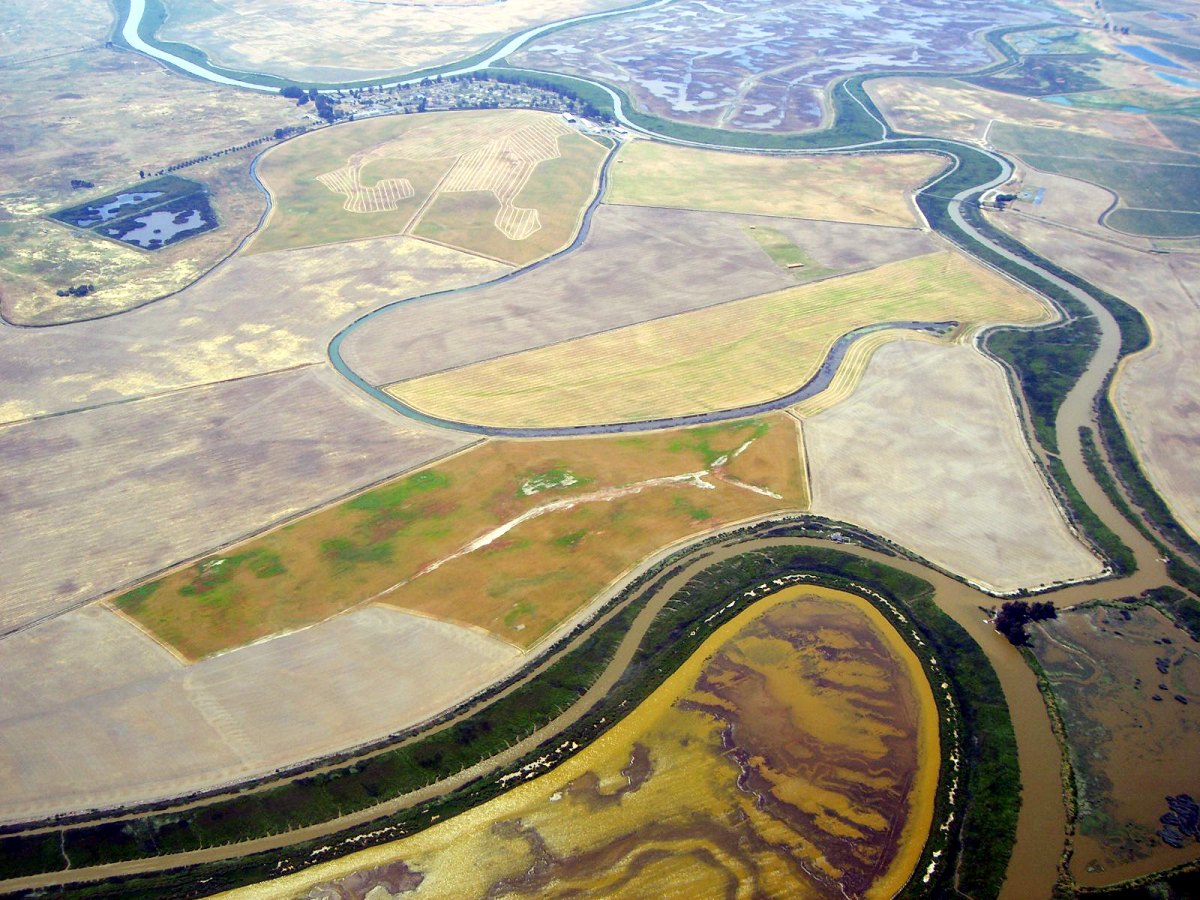Spinal deformities in Sacramento-San Joaquin Delta fish linked to toxic mineral selenium, new research shows: “Native fish discovered with spinal deformities in California’s Sacramento-San Joaquin Delta in 2011 were exposed to high levels of selenium from their parents and food they ate as juveniles in the San Joaquin River, new research has found. The finding published in Environmental Science and Technology indicates that some fish in the region may experience harmful levels of selenium. Selenium is a naturally occurring mineral that is essential to life but turns toxic and can cause deformities at high levels. Deformities were also found in birds exposed to selenium concentrated in agricultural runoff in the same area in the 1980s. … ” Read more from NOAA here: Spinal deformities in Sacramento-San Joaquin Delta fish linked to toxic mineral selenium, new research shows
Study reveals hidden risks of estuary development for young salmon: “A Simon Fraser University-led research team has found significant evidence that human activity in estuaries is impacting juvenile Pacific and Atlantic salmon. The team’s review of 167 peer-reviewed studies (from an initial search of 13,000) identified negative impacts from several stressors, including the effects of flood-protecting tidal gates, pollution and habitat modification. Their results were published today in Global Change Biology. ... ” Read more from PhysOrg here: Study reveals hidden risks of estuary development for young salmon
USGS scientists use sound and light to measure sediment in water: “Sediment dynamics are an indicator of the health of aquatic ecosystems. Scientists use this data to provide information for agencies and groups interested in ecosystem restoration, fish conservation, and resource management. In recent years, because of their accuracy and ease-of-use, the use of technologies such as acoustic doppler, multibeam echosounder, and lidar (laser light) have become increasingly popular for monitoring aquatic sediment. … ” Read more from the USGS here: USGS scientists use sound and light to measure sediment in water
Let it snow: Quantifiable observation of cloud seeding: “Two University of Wyoming researchers contributed to a paper that demonstrated, for the first time, direct observation of cloud seeding using radar and gauges to quantify the snowfall. Traditionally, cloud seeding — used to increase winter snowpack — has been evaluated using precipitation gauges and target/control statistics that led mostly to inconclusive results. The research, dubbed SNOWIE (Seeded and Natural Orographic Wintertime Clouds — the Idaho Experiment), took place Jan. 7-March 17, 2017, within and near the Payette Basin, located approximately 50 miles north of Boise, Idaho. The research was in concert with Boise-based Idaho Power Co., which provides a good share of its electrical power through hydroelectric dams. ... ” Read more from Science Daily here: Let it snow: Quantifiable observation of cloud seeding
Freshwater flowing into the North Pacific plays key role in North America’s climate: “Massive freshwater river flows stemming from glacier-fed flooding at the end of the last ice age surged across eastern Washington to the Columbia River and out to the North Pacific Ocean, where they triggered climate changes throughout the northern hemisphere, new research published today in Science Advances shows. The findings provide new insight into the role the North Pacific Ocean plays in the planet’s climate, said Alan Mix, an oceanographer and paleoclimatologist in Oregon State University’s College of Earth, Ocean, and Atmospheric Sciences and one of the study’s authors. … “ Read more from Science Daily here: Freshwater flowing into the North Pacific plays key role in North America’s climate
Spotting the shy guy – why collaboration with local indigenous people can be an asset to conservation management: “Think about your workplace and when you interviewed for your job. Were you asked how well you work on a team? This is one of the most common interview topics, and for a good reason. Working well with others is seen as an immensely positive trait, and the importance of collaboration in scientific research is highly valued because team members learn from each other and are better at solving problems. For decades, scientists have used the knowledge of local communities and indigenous people when conducting research. Local people can be great assets to scientific studies and fieldwork, as they may be able to find animals and plants that are not discoverable by “outsiders,” and they may be more committed to subsequent conservation efforts due to their attachment to the area. Despite the fact that they are often key assets, local people are often overlooked as official collaborators when scientists conduct research in the field. A recent Australian study highlights the importance of including local and indigenous people in conservation research. While examining mitigation of lizard population declines, scientists stumbled upon a surprising finding about how researchers’ cultural differences can affect fieldwork and experimental outcomes. … ” Read more from EnviroBites here: Spotting the shy guy – why collaboration with local indigenous people can be an asset to conservation management
The upside of upside-down jellyfish: “At first glance, Cassiopea jellyfish may seem like ridiculous failures. Unlike most jellyfish that swim with their bells pointed up, these so-called upside-down jellyfish spend most of their time with their bells resting on the seafloor of shallow, still coastal waters. There, they persistently pulse as if on a Sisyphean quest to burrow through the planet. Now, new research suggests these creatures’ flailing may play an important role in flooded mangrove forests. The results of research published as a pre-print study show that the jellies’ pulsing causes a surprising amount of mixing in the water. An average-sized Cassiopea can send a water jet several meters upward, and at median densities on the seafloor, a group of jellies can mix a one-meter column of water every 15 minutes. Cassiopea move an order of magnitude more water than filter-feeding animals such as oysters and mussels, even when accounting for the size differences between species. … ” Read more from Hakai Magazine here: The upside of upside-down jellyfish
Featured Image credit: North Bay tidal marsh: The northern edge of the San Francisco Bay, looking west, with the former Skaggs Island Naval facility at the top. Photo by Todd Lappin via Flickr.
About Science News and Reports: This weekly feature, posted every Thursday, is a collection of the latest scientific research and reports with a focus on relevant issues to the Delta and to California water, although other issues such as climate change are sometimes included. Do you have an item to be included here? Submissions of relevant research and other materials is welcome. Email Maven




